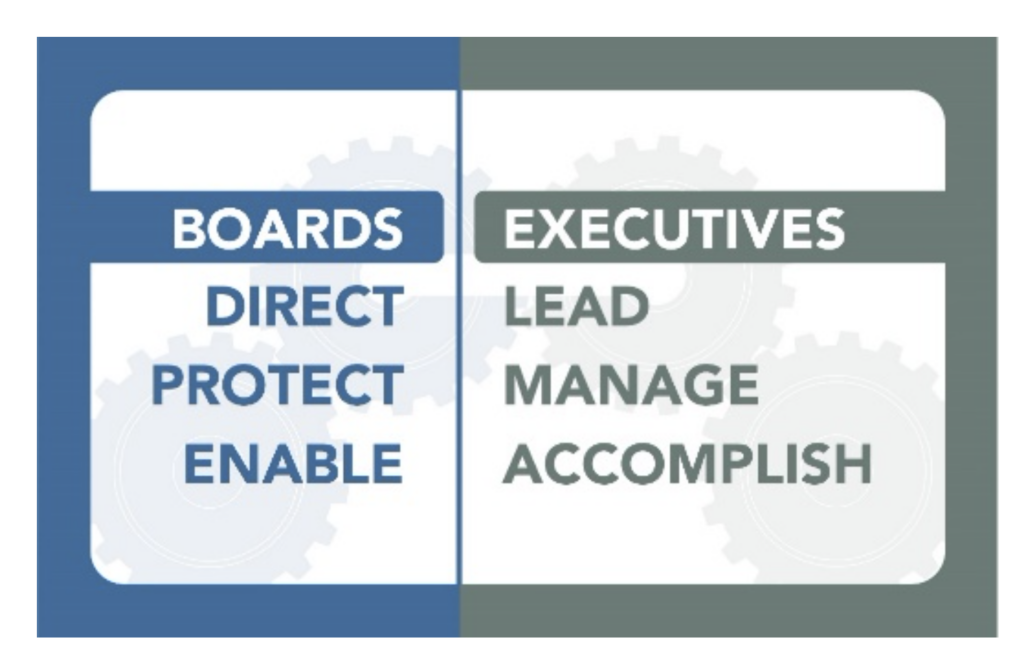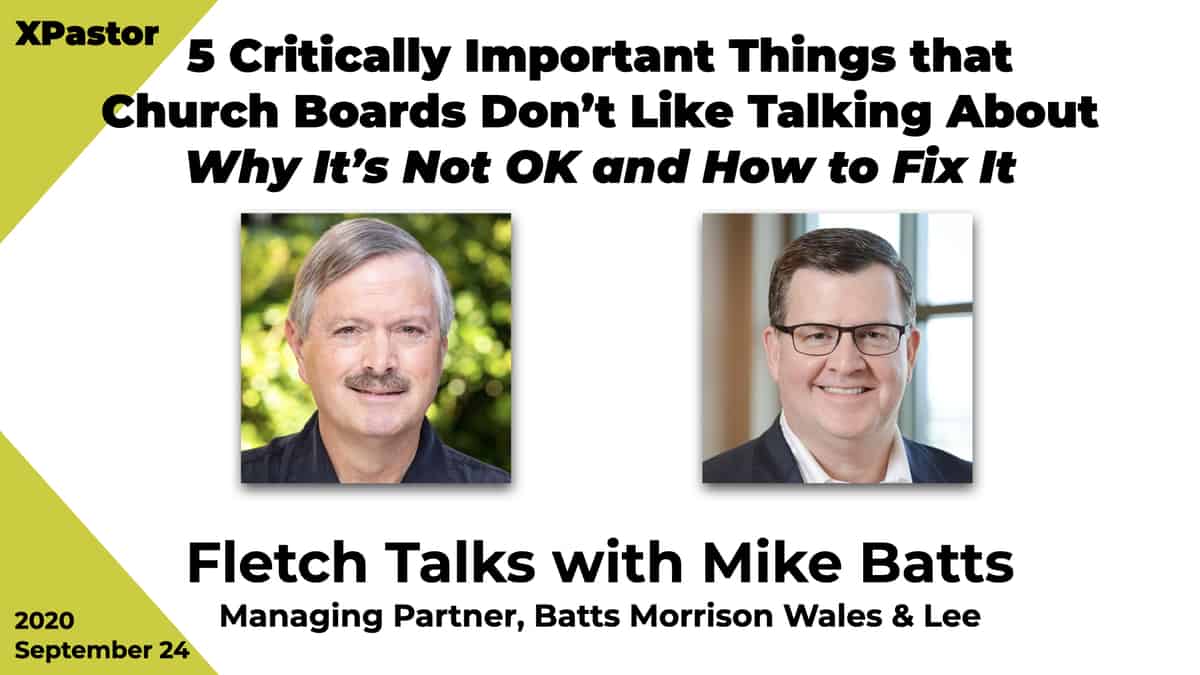At some point, every lead pastor asks this question: How do we govern this church? Often with little background on the subject, pastors and boards cobble together a system that either works for the pastor or works for the board but rarely works for both. What’s needed is an actionable model that serves the pastor and the board organizationally, spiritually, and scripturally.
To address this, I have created the Aligned Influence model. My many years of teaching corporate governance at a well-known business school and my love for and many decades of leadership in local church ministry provide me with a unique opportunity to equip churches with an informed eye that stays true to the Scriptures and true to life.
Any approach to church governance should address at least four key items:
- What lessons can we learn from our failed attempts at church governance?
- What is the primary intention of governance?
- What guidance does Scripture provide?
- What are the best practices of governance in our day and time?
As I have observed trends in the local church over the last several decades, I have found at least three failed approaches to local church governance.
First Failed Approach—The Bible Is Our Only Source of Guidance for Governing the Church
This approach has often been referred to as biblical eldership, and the claim that goes along with it is that this form of leadership was established in the first century and must be implemented in exactly the same way in the twenty-first.
However, on closer examination of the New Testament, we find that leadership in local churches was far more flexible. After Jesus chose the Twelve, the next leadership role was deacon. This came about because practical needs needed to be quickly addressed (Acts 6:1-6). Only much later under the ministry of Paul was the role of elder or overseer added (c. AD 60 or later). The development of local church leadership reveals far more flexibility, even in the New Testament, than the biblical eldership position asserts.
As my writing partners and I have poured over the historical record, we’ve been impressed with two overarching truths:
- The roles of church leaders expressed in Paul’s letters were not instantly implemented. They developed progressively.
- The creation of leadership structures was tailored to specific church and cultural needs, even as they remained faithful to Scripture.
Therefore, looking at Scripture and history, we discern a principle: While we start with foundational biblical principles, God gives flexibility to the church to adapt those principles in ways appropriate to specific cultures and needs.
This notion of foundational clarity with flexible application is actually rooted in Paul’s leadership directives. Paul’s directives address character first (1 Timothy 3:1-13; Titus 1:5-9; cf. 1 Peter 5:1-4). Yes, Paul does give direction for a handful of activities, such as praying for the sick and teaching sound doctrine. However, when we attempt to extract governing principles from such passages only, we easily end up with structures that contradict what we have learned historically about principles of good governance.
For example, using only original language word studies and biblical exegesis, some individuals conclude that there is no difference between the roles of the lead pastor and the elder. Hence, the overseen is also the overseer. Nearly every governance failure seems to stem from this.
Another problem we found in churches that don’t respect the foundational clarity with flexible application approach is that they don’t have the tools to contextualize biblical imperatives to twenty-first century realities. They apply the biblical commands directly, as if they were still operating in first-century culture. This is a problem both hermeneutically and practically.
We don’t live in the first century. Many of the issues churches face today didn’t even exist then (e.g., issues such as internet pornography, various postmodern critical theories, and gender transition therapy, to name but a few).
Churches are different too. The vast majority of churches rent or own property; they are not house churches with single property owners as they were in the first century. Churches also vary in size and complexity, donation dollars received, and a host of other differences.
Furthermore, when we attempt to extract governing principles from Scripture, without contextualizing those first-century principles to twenty first-century realities, we often end up with structures that fail to achieve sound board governance: namely, that boards (elder or deacon) and executive leaders (pastors and their staff) have different functions. To be healthy, they must respect their different roles and align those roles in such a way that they protect the organization (church) while also supporting and accomplishing its work.
To be clear, Scripture is always our foundation. It provides timeless guidance. But God also speaks to us in general revelation. This includes human experience and history. To neglect the astonishing insights about leadership from general revelation is to neglect something of immense value.
The Second Failed Approach—The Pastor as CEO
This approach finds its roots in the work of John Carver, and it’s often called the policy governance model.
On the positive side, the Carver approach affirms that the board and pastor (executive) have different roles. This is consistent with many best practices among secular boards, and it does not conflict with biblical guidance.
However, Carver’s model mainly focuses on governance policy and board relations. While policies and boundaries are good, we’ve learned through our consulting work that these are insufficient to secure healthy governance.
Furthermore, the policy governance approach mainly defines the board’s role and does not specifically define the role of the pastor.
In this approach, there tends to be an extreme separation of roles between pastor and board. This separation often leads to frustration between the board and the pastor.
In some cases, boards feel more like advisory boards with no real oversight or do role. Moreover, the governance structure provides little direction for achieving alignment between the two groups.
Third Failed Approach—Pastor, Don’t Let the Board Get in Your Way
Every pastor I know walks with a limp. This limp is often the result of past painful relationships with elder boards. In the aftermath of those leadership experiences, pastors often say to themselves, “I’ll never let that happen again.” So while pastors readily acknowledge that Scripture and secular law require a church board, they strive to ensure that their church’s board remains under pastoral control.
Many pastors heard the refrain by well-meaning but misguided professors in a seminary class, You know how to run your church; the board does not. Don’t let them get in your way. That counsel poses a serious problem. Sometimes the very function of governance requires that those charged with legitimate oversight “get in the way” of those who may be harming the interests of the church—even the pastor. Unfortunately, recent history has been filled with very public church failures that were a direct result of boards failing to provide needed oversight while pastors exercised too much control.
Surely there is a better way.
A Key Question
Why have a board? It’s easy to come up with incomplete answers:
- Local laws require it.
- The Bible mandates it.
- The church needs it.
The essential reason is this: When an organization manages someone else’s assets, the board provides a protective function—namely, to manage the assets of others.
- For-profit boards manage investors’ assets.
- Nonprofit boards manage the assets of members, donors, and grantors.
- Church boards manage assets that members have donated, in some cases sacrificially. Furthermore, church boards also exist to ensure that the strategic vision of the church is clear and that its leaders have the resources necessary to carry out that vision.
In short, boards exist to ensure that the interests of those whose assets are being managed are protected. And when it comes to a church, a board should ensure that pastors act with wisdom and ethical integrity. When a pastor fails in this, the board should wisely protect the congregation from the pastor’s actions. After all, a church’s assets are more than financial; they also include the congregants, the church’s reputation, and other matters important to the church’s mission.
Start with Scriptural Directives
Local church leadership is derived from four key passages in the New Testament: Acts 6:1-6; 20:17-35; 1 Titus 1:5-9; and 1 Peter 5:1-4. These passages are foundational because they describe culture and character. In rarer cases, they describe function.
However, in our view, local congregations are free to contextualize these overarching principles into best practices in each culture in every succeeding generation. In short, the how of being overseer, elder, deacon, and pastor is broadly left to those who hold the offices. Like many things in the Christian’s walk, we are given liberty to determine how we should govern.
Best Practices of Governance
If we start with the general guidelines of Scripture and then consider the realities of twenty-first century legal requirements—along with emerging best-practices in the field of corporate human relations—we can identify the following best practices and apply them to church governance:
- Separate the roles of board and pastor and make their roles crystal clear.
- The role of the board is to direct, protect, and enable.
- The role of the pastor and his or her staff is to lead, manage, and accomplish.

This graph summarizes my Aligned Influence model of governance. Boards have three distinct roles, and executives do as well. And each pair of roles is aligned.
Long term, the board directs by defining what is to be accomplished, who is to be served, and the ideals to be maintained. The pastor leads by creating the ministry plans with budgets and staff that support them.
Day-to-day, both also have a voice in the operation of the church. The board protects the church by establishing operational boundaries to ensure the integrity of the ministry. And the pastor leads and manages by creating operational policies and procedures to ensure that the vision of the ministry is fulfilled within the protective boundaries created by the board.
Both also have a do role: the board enables the work of the church through advocacy, resource development, and role discipline, and the pastor accomplishes the work of the church.
In this Aligned Influence scenario, the chairperson of the board has a crucial role. He or she maintains discipline within the board, ensuring that board and pastor are both operating within their respective roles.
Moreover, in this scenario, the church is empowered with documents that clearly articulate the respective roles of board and pastor.
- Policies that establish the church are created by the board with the assistance of an attorney and include bylaws and constitutions.
- Polices that govern the church are also created by the board and include direction, protective boundaries, and an articulation of the board’s role to enable the work of the church.
- Policies that operate the church are created by the pastor and his or her ministry teams.
Getting Aligned
A skilled facilitator is crucial to the process of guiding churches into the alignment approach to governance:
- The first step is assessing the current level of alignment within the church.
- The second step is to craft the policies and calendaring tools that support that alignment.
- The third step is locking that alignment in place through a calendar of critical activities each year.
I encourage you to read more detail about the Aligned Influence model in my book Aligned Influence: Beyond Governance, which is available on Amazon and other resource outlets. I also suggest that you visit our website Aligned Influence where you can read more about the model and the experiences of others who have already implemented it.
I believe that the Aligned Influence model empowers pastors to lead, boards to oversee, and churches to thrive.











